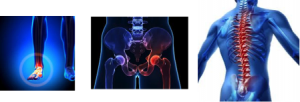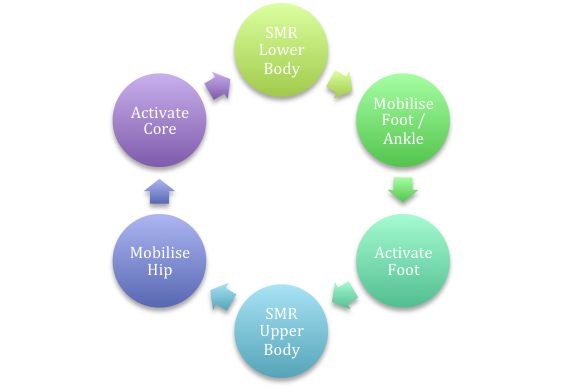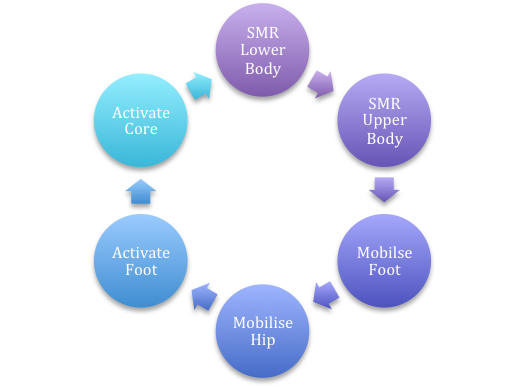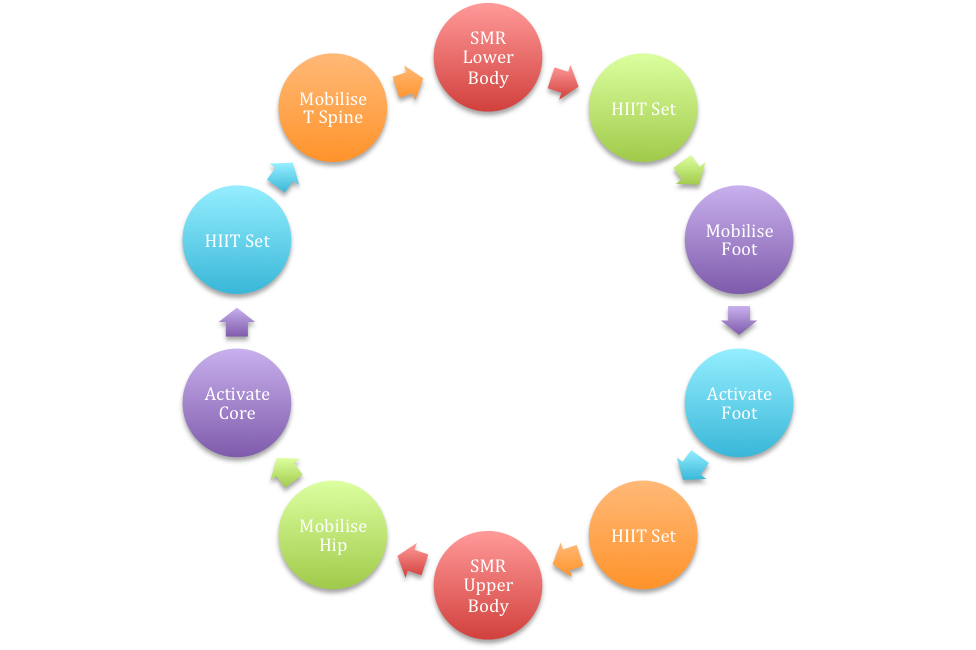Your blog post content is here…
We often get asked when teaching Trigger Point Performance or PT Academy Certificate IV in Fitness: “Where should we put Self Myofascial Release (SMR) into our programming?” It’s a fair question. With all the science and data around training results, many people in our industry concentrate on the main, or we like to term it the PTA ‘Goal-Based Movement’ (GBM) phase. Sure, that’s when your client’s set length and intensity will dictate the training response and most trainers are very aware of how to program for this. But when do we program mobility and stability training for our clients?
The correct answer is: EVERYWHERE!
In terms of programming, SMR can be used anywhere in your programming. One of the most potent benefits of SMR is increasing the range of motion, particularly at the start of a training session. So it makes sense to help people move as best as possible before putting them into the Goal-Based Movement phase.
Mobilisers are another great way to enhance movement for our bodies. Mobilisers help the body’s mobile structures communicate better to improve overall body rhythm and movement.
Stability based ‘activation’ exercises are a great way to help people switch on their body to understand where a particular joint is located and how it feels in a stable position. The book ‘A Guide to Better Movement’ by Todd Hargrove describes this beautifully.
One common issue we see with our Cert IV students from a programming perspective is this: What does this mean in real life?
How do I use this in a program designed to help my clients move better?
The big caveat to the information I will detail below is: It should all be specifically CLIENT BASED!
Of course, in a group setting, the issue is that everyone is different. The good news is that SMR, mobilisers and stability drills are beneficial to everyone. The integrated Myofascial network of our body is a tensegrity structure; by helping one part of the body move better, we support the rest of the body.
We know that most of our clients’ lives are spent in a seated position; this usually leads to postural reinforcements and compensations common to many of our clients. Based on this, some great areas to ‘free up’ are:
- Foot/ankle
- Hips
- Thoracic spine
There are varying methods of achieving an improvement of movement in these areas and the purpose of this blog is not to instruct you on them. There are specific courses for that purpose. This blog is designed to give you an example of how you might incorporate mobility and stability into your sessions. I will provide an example of what a mobility/stability movement preparation circuit could look like and how you might incorporate mobility and stability drills into more high-intensity interval training movement.
Movement Preparation:
The purpose here is to get people moving as best as possible. This is especially important if you’re about to put high amounts of stress in their body during the goal-based movement stage.
Goal-based Movement:
The purpose here is to include SMR and mobility to keep people moving as best as they can during intense bouts. It is also an excellent way to work in the correct work-rest ratios into a HIIT session depending on what intensity you’re working at. An example layout here is:
As you can see, there are two bouts of mobility or stability between each effort set. This program gives people a 1:3 work-rest ratio, which lets their heart rate recover before another round of high effort.
These are just some examples of the many ways you can incorporate mobility drills as circuits into your group or even one-on-one sessions.
– Chaddy.
Want to learn even more about how to Program Mobility and Stability Training and SMR? Book into the upcoming Trigger Point GRID course with PTA HERE




